I'm trying to understand the following circuit:
I expected it to work like this: Initially the LED is dark. When S1 is pressed, Q2 is "opened" and powers Q1's base, so Q1 is "opened" and current can flow to the LED. In addition, because Q1's emmitter is connected to Q2's base, I expected that both transistors will stay "open" and the LED stays lit up even when S1 is released.
But it doesn't work like that. When S1 is pressed, the LED is lit up, but when S1 is released, the LED goes dark again. Why is that?
EDIT: Added D2:




